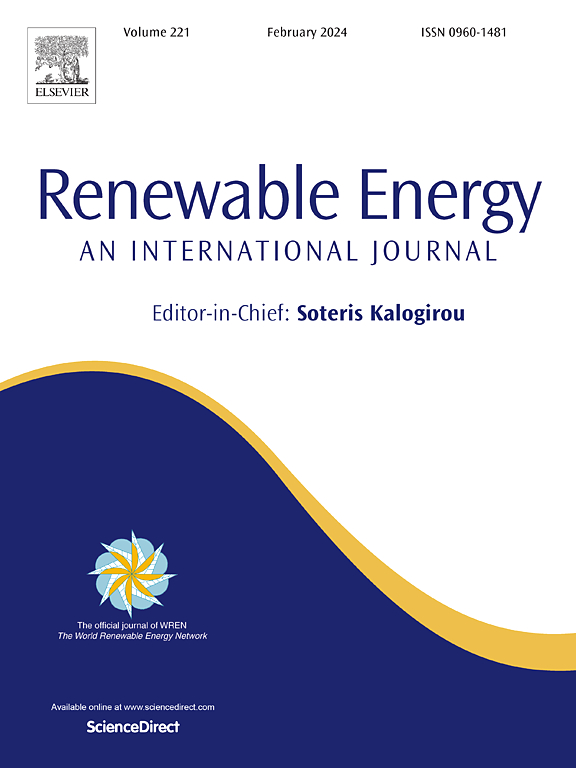Dragonfly-wing-inspired corrugated splitter plates for enhancing flow-induced vibration piezoelectric energy harvesting
IF 9.1
1区 工程技术
Q1 ENERGY & FUELS
引用次数: 0
Abstract
This study introduces a novel biomimetic strategy to enhance flow-induced vibration (FIV) energy harvesting by incorporating corrugated splitter plates inspired by the microstructural features of dragonfly wings. While conventional splitter plates have been proven effective in improving the performance of piezoelectric energy harvesters, the aerodynamic benefits of bio-inspired surface morphologies have received limited attention. Four innovative bionic splitter plate configurations are designed and integrated into a piezoelectric cylinder system. The effects of these corrugated designs are systematically investigated under three installation angles (30°, 60°, and 90°). The experimental results demonstrate that the bionic splitter plates significantly outperform smooth plates at all three angles, with maximum increases of 23.7 %, 41.6 %, and 20.5 %, respectively. Numerical simulations reveal that the corrugated structures affect vortex shedding patterns, vortex structures, and local aerodynamic characteristics on splitter plates. While the shedding mode remains unchanged at 30° and 90°, a clear transition is observed at 60°, accompanied by the formation of secondary vortices and intensified wake instability. Furthermore, the corrugated structures induce sudden changes in the average pressure distribution, resulting in a larger pressure differential across the splitter plate, which amplifies bluff body oscillations and boosts energy output.
蜻蜓翼型波纹分离器板增强流激振动压电能量收集
本研究以蜻蜓翅膀的微结构特征为灵感,提出了一种新的仿生策略,通过结合波纹分离器板来增强流激振动(FIV)能量收集。虽然传统的分流板已被证明在提高压电能量收集器的性能方面是有效的,但仿生表面形态的空气动力学效益却受到了有限的关注。设计了四种创新的仿生分裂板结构,并将其集成到压电圆柱体系统中。在三种安装角度(30°,60°和90°)下,系统地研究了这些波纹设计的效果。实验结果表明,仿生分裂板在三个角度下的性能都明显优于光滑板,最大增幅分别为23.7%、41.6%和20.5%。数值模拟结果表明,波纹结构影响了分流板上的涡脱落模式、涡结构和局部气动特性。虽然在30°和90°时脱落模式保持不变,但在60°时观察到明显的转变,伴随着二次涡的形成和尾迹不稳定性加剧。此外,波纹结构引起平均压力分布的突然变化,导致劈裂板上的压力差更大,这放大了钝体振荡并提高了能量输出。
本文章由计算机程序翻译,如有差异,请以英文原文为准。
求助全文
约1分钟内获得全文
求助全文
来源期刊

Renewable Energy
工程技术-能源与燃料
CiteScore
18.40
自引率
9.20%
发文量
1955
审稿时长
6.6 months
期刊介绍:
Renewable Energy journal is dedicated to advancing knowledge and disseminating insights on various topics and technologies within renewable energy systems and components. Our mission is to support researchers, engineers, economists, manufacturers, NGOs, associations, and societies in staying updated on new developments in their respective fields and applying alternative energy solutions to current practices.
As an international, multidisciplinary journal in renewable energy engineering and research, we strive to be a premier peer-reviewed platform and a trusted source of original research and reviews in the field of renewable energy. Join us in our endeavor to drive innovation and progress in sustainable energy solutions.
 求助内容:
求助内容: 应助结果提醒方式:
应助结果提醒方式:


